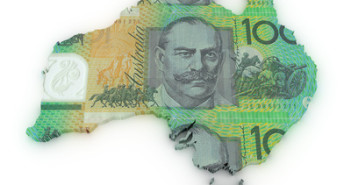The RBA, in a shock decision last week decided to keep interest rates on hold in Australia at a record low of 2,25%, brushing off fears of weak unemployment and poor capital expenditure figures.
Before the Announcement, 58% of analysts polled expected the central bank to cut rates to 2.25%
Guest Post by Andrew Masters from FiboGroup
One of the reasons the bank may have been reluctant to move is the sky high prices in the property market with another rate cut only adding fuel to the fire.
In his speech after the rate decision Reseve Bank governor Glen Stevens noted that the housing market remains a worry, in particular regarding investors and that the central bank is considering ways to tackle the problem,
“Credit is recording moderate growth overall, with stronger growth in lending to investors in housing assets. Dwelling prices continue to rise strongly in Sydney, though trends have been more varied in a number of other cities over recent months.” He said
“The Bank is working with other regulators to assess and contain risks that may arise from the housing market. In other asset markets, prices for equities and commercial property have risen, in part as a result of declining long-term interest rates”. He also noted.
The latest GDP figures last week may be a reason for the central bank to cut rates in April as the economy struggles to overcome the end of the mining boom.
Gross domestic product in Australia grew 0.5% in the last quarter of the year, coming in below expectations of a 0.6% rise while the yearly figure came in at a disappointing 2.5%, which analysts attribute to the end of the mining boom.
“The soft growth outcome reflects falling mining investment, weak public spending and a large subtraction to growth from inventories,” said Felicity Emmett, economist at ANZ Bank.
“We expect the Reserve Bank of Australia to cut the cash rate by a further 25 basis points in April.”
Australia’s unemployment currently sits at a 13 year high of 6.4% with many analysts expecting the figure to move higher throughout the year adding more pressure to a rate hike,
“The good news is we’ve now completed 23 years of continuous growth,” said Michael Blythe, chief economist at Commonwealth Bank.
“The bad news is we’re still running below trend, which will keep upward pressure on the unemployment rate and the RBA (Reserve Bank of Australia) on rate-cut watch.” He added
In his speech last week Deputy governor of the Reserve Bank of Australia Philip Lowe noted that the Australian dollar is still too high which may be in part as a result of external factors,
“The Reserve Bank Board has responded to a softer economic outlook by having interest rates lower than otherwise. The easier monetary policy in Australia has supported the domestic economy” he said.
“It has done this partly by offsetting some of the upward pressure on our currency from developments abroad, although the scale of global monetary stimulus means that our exchange rate remains relatively high given the state of our overall economy”.
“The end result here is that global developments have left us with a higher exchange rate and lower interest rates than would otherwise have been the case. We may not like this configuration, but developments abroad give us little choice” he also noted.
